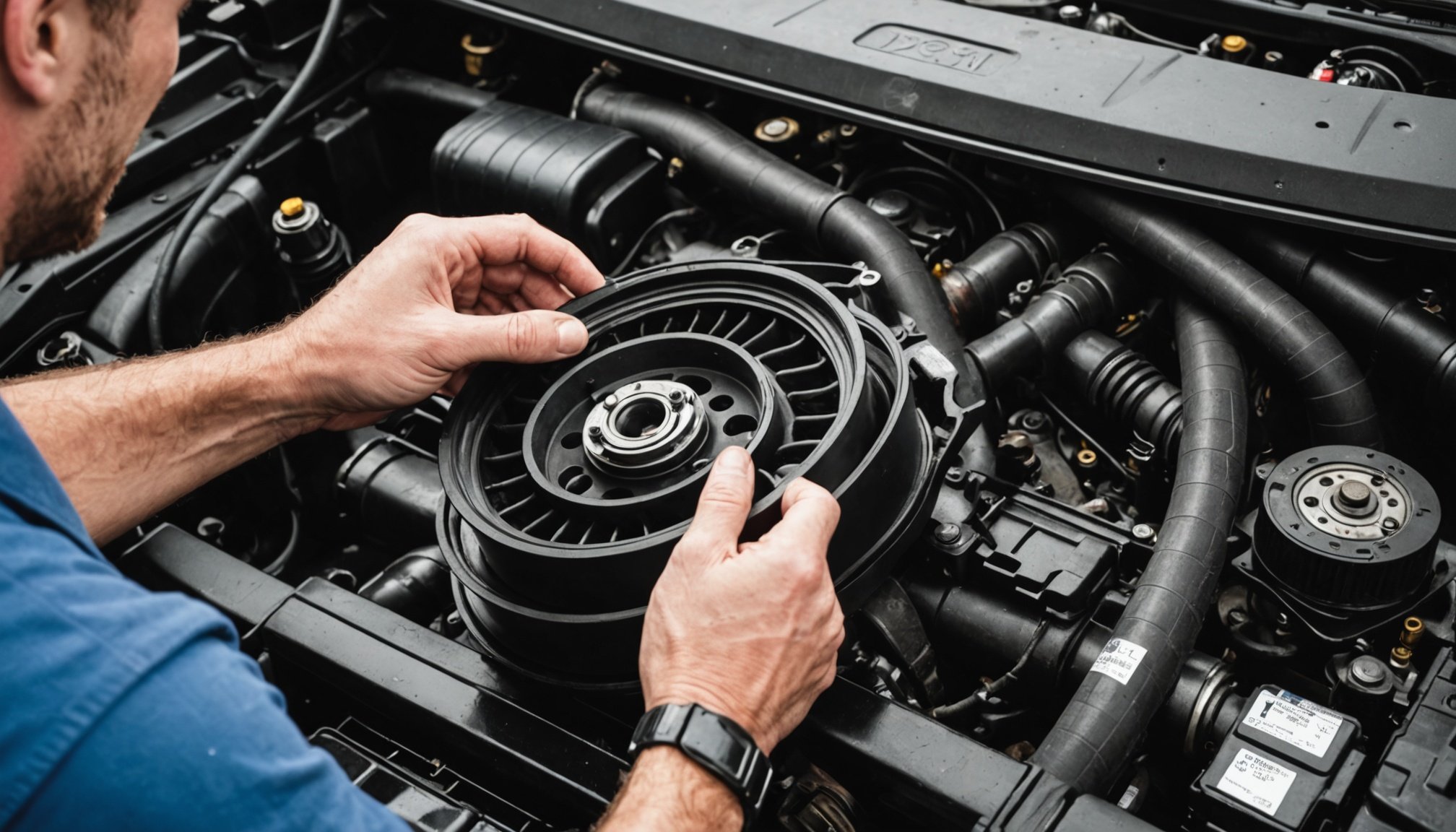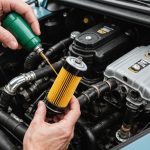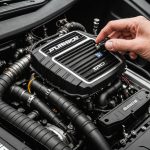Overview of Serpentine Belts
The serpentine belt is a crucial component of an SUV’s engine system. It powers several vital accessories, such as the alternator, power steering pump, and air conditioning compressor. Its flexibility allows it to snake through different engine parts efficiently. Ensuring the belt functionality is essential for vehicle reliability and performance.
SUV maintenance plays a pivotal role in prolonging the life of the engine, with the serpentine belt requiring particular attention. A failing belt may lead to significant issues, such as overheating or losing power steering. Thus, recognising symptoms indicating a replacement is necessary for maintaining optimal vehicle performance.
Topic to read : Comprehensive safety tips for changing your petrol car”s fuel filter: the ultimate guide for a smooth replacement
Typical signs that a serpentine belt may need replacing include squeaking noises, visible cracks, and fraying. Additionally, if the belt feels loose or there are signs of wear, an inspection is warranted. Regular SUV maintenance, including timely belt replacements, helps prevent more significant, costly issues, thereby ensuring vehicle longevity.
Incorporating these inspections into your routine vehicle check-ups can mitigate risks associated with belt failures. Regular monitoring of the serpentine belt allows for timely interventions, making your SUV safer and more reliable for everyday travel. By understanding the belt’s role and maintenance needs, you can assure the continued efficiency of your vehicle.
Also read : Crucial safety tips for driving a fully loaded minibus: your ultimate guide to safe navigation
Tools and Materials Needed
Before beginning a serpentine belt replacement, having the right automotive tools and materials ready is essential for a smooth DIY operation. A well-prepared toolbox is imperative for both efficiency and precision.
To start, ensure you have various socket sizes, commonly ranging from 13mm to 15mm, depending on your SUV’s model. An adjustable wrench and a belt tensioner tool or long-handle ratchet will ease the task of removing and installing the belt. Having these precise tools reduces the risk of erroneous fits and potential injuries during the job.
Regarding DIY supplies, a replacement serpentine belt of high quality is mandatory. It’s advisable to check your vehicle’s manual for the correct specifications. Additionally, a can of lubricant can prove helpful for easing the removal of stubborn bolts or components. Always choose reputable brands to guarantee reliability and performance—this is vital for the longevity of both parts and vehicle.
When sourcing these components, visit trusted automotive stores or certified online retailers. These sources often provide detailed guides and reputable advice, which contribute to a safer and more successful project, ensuring your SUV maintains its optimal performance post-repair.
Safety Precautions
Prioritizing vehicle safety during any automotive work is essential. Before commencing a serpentine belt replacement, disconnect the battery to prevent electrical shocks or unexpected engine starts. This preliminary check is a fundamental step for accident prevention. Equipping yourself with the proper personal protective equipment (PPE) is equally crucial. Use safety glasses to shield eyes from potential debris, and wear gloves to protect hands from injuries.
Creating a safe working environment means keeping your workspace organized and free from hazards. Ensuring your vehicle is on a stable surface like a driveway, rather than on an incline, prevents accidental shifts while you work. Employ wheel chocks to further enhance stability if necessary.
When working on an SUV, maintain proper posture and use tools with caution to prevent strains or injuries. Avoid wearing loose clothing that might catch in moving parts or tools. Additional DIY safety tips include ensuring good lighting to see clearly and using a proper step for elevated work areas, which minimizes risks of falls or slips. By adhering to these automotive work precautions, vehicle repairs can be conducted safely and efficiently.
Step-by-Step Replacement Process
Transitioning to a serpentine belt replacement process involves understanding each critical phase from preparation to testing. By following these DIY instructions, you can effectively manage your automotive repair process.
Preparation and Inspection
Begin by collecting necessary tools and automotive repair manuals for guidance. Conduct an inspection to ensure the surrounding components are accessible and unaffected, which will facilitate a smoother replacement process.
Removal of the Old Belt
Detach the belt by loosening the tensioner pulley with an appropriate tool. Carefully slide the belt off each pulley, observing its routing to aid with new installation. Removal should be performed precisely to prevent damage to pulleys or other components.
Installation of the New Belt
With the old belt removed, position the new one according to the vehicle’s manual. Ensure the belt follows the correct routing. Proper alignment is crucial for optimal performance; verify each section aligns precisely with pulleys. Aligning the belt manually, apply tension accordingly using the tensioner, ensuring it’s neither too tight nor too loose.
Re-check the installation before starting the vehicle, adjusting the routing if necessary. This verification step prevents misunderstandings in belt tension or alignment that could lead to performance issues, enabling a successful serpentine belt installation.
Common Pitfalls and Troubleshooting
During a serpentine belt replacement, mistakes can lead to inefficient repairs or further complications. One common mistake is improperly routing the belt, which can cause malfunctioning of connected components. Always refer to your vehicle’s manual for correct routing to avoid such issues.
Troubleshooting serpentine belt problems involves checking tension levels and ensuring the belt is neither too tight nor too loose. An improperly tensioned belt can cause excessive wear or slippage, impacting the belt functionality. If you hear squealing sounds, reassess the tension or inspect for alignment errors.
Unexpected challenges might include difficulty with the tensioner pulley. If it seems jammed, applying a lubricant can help ease the motion. Remember, worn pulleys or misaligned components also commonly contribute to serpentine belt issues and should be checked thoroughly.
For a successful repair, be vigilant about cracks or fraying on the new belt and address common mistakes through early inspection. If issues persist, consider consulting an expert or using DIY solutions found in your vehicle manual or online resources. These practices ensure the new belt operates as expected, enhancing your SUV’s performance.
Additional Resources
Exploring DIY automotive resources can greatly enhance your understanding and execution of a serpentine belt replacement project. For visual learners, video tutorials are valuable, offering step-by-step guidance that complements written instructions. They can reveal nuances in technique and procedure that are difficult to capture in text.
Consider engaging with online forums and communities dedicated to vehicle maintenance. These platforms enable you to share experiences, seek advice, and access insights from a broad spectrum of enthusiasts and experts. The collaborative environment can provide unique troubleshooting strategies and innovative DIY solutions.
While seeking knowledge, maintenance education in the form of books or downloadable guides can offer deeper insights into automotive care. These resources often cover a wide array of topics, from basic principles to advanced tactics. Detailed literature equips you with the expertise to not only perform specialized tasks but also to anticipate and prevent future issues.
Leverage these diverse resources to build your skills in automotive maintenance, ensuring your SUV remains in top condition. Expanding knowledge through varied media solidifies your abilities, making you proficient in DIY automotive projects and adept at troubleshooting complexities.











